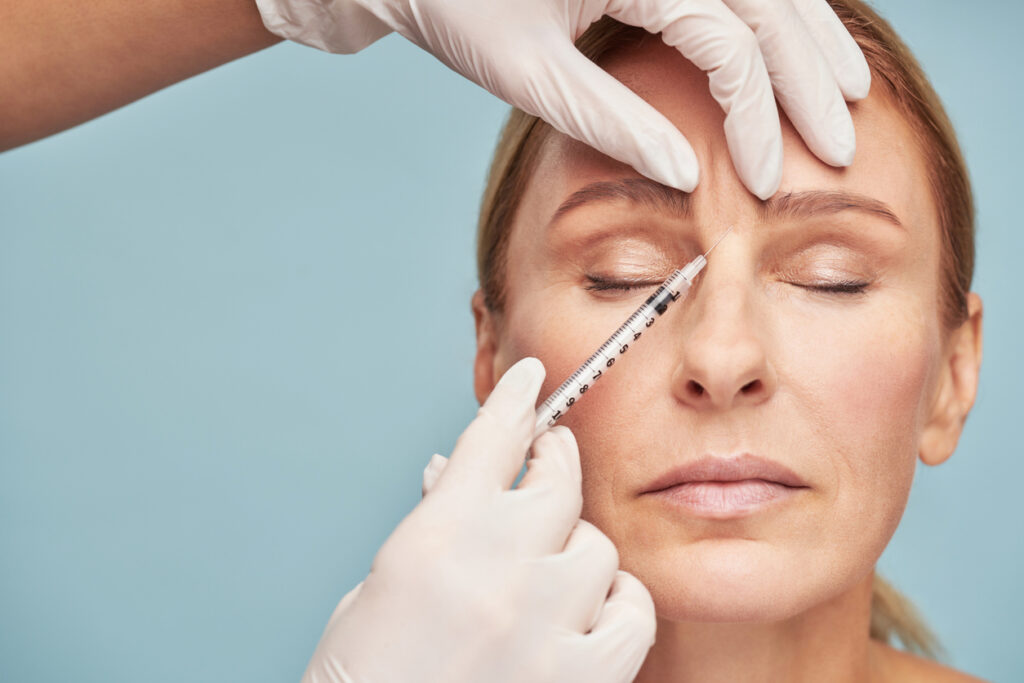RelabotulinumtoxinA (Relfydess, Galderma) showed long-term safety for frown lines and crow’s feet after repeated injections, according to new data from the READY-4 clinical trial presented at the American Society for Dermatologic Surgery (ASDS) 2024 Annual Meeting in Orlando, FL.
The READY-4 study met its primary and secondary endpoints, with less than one in five participants experiencing treatment-related treatment-emergent adverse events (TEAEs), and all events deemed mild or moderate. Efficacy and patient satisfaction were also maintained across multiple treatments.
RelabotulinumtoxinA is the first and only ready-to-use liquid neuromodulator created with PEARL Technology that is designed to preserve molecule integrity to deliver a highly active, innovative, complex-free molecule. Galderma completed its European decentralized procedure for RelabotulinumtoxinA in July 2024, resulting in a positive decision, and national approvals are now under finalization. RelabotulinumtoxinA also received a marketing authorization in Australia earlier this year. Regulatory applications for RelabotulinumtoxinA for the treatment of frown lines and crow’s feet will continue to be submitted and assessed by additional authorities globally. Galderma is working to launch RelabotulinumtoxinA in the markets in which it is approved in the first half of 2025.
Previously announced data from the READY clinical trial program showed that up to 39% of patients see effects from day one and up to 75% of patients maintain improvements for six months for frown lines and crow’s feet when treated with RelabotulinumtoxinA. These READY-4 data demonstrate RelabotulinumtoxinA’s consistent safety and efficacy profile with repeated injections over a year, supporting its potential to be a safe, effective, and durable treatment for both frown lines and crow’s feet,” says Baldo Scassellati Sforzolini, MD, PhD, the Global Head of R & D at Galderma, in a news release.
READY-4 is a phase III, multicenter, open-label study, designed to evaluate the safety of RelabotulinumtoxinA for the long-term treatment of moderate-to-severe frown lines and crow’s feet in more than 900 participants. Injections were administered at a minimum of 12 weeks apart, in up to four cycles over 12 months.
Results demonstrate the long-term safety of repeated RelabotulinumtoxinA injections, consistent with the safety profile observed in the phase III READY-1, -2 and -3 clinical trials. TEAEs were all mild to moderate, reported by 18% of participants and with similar occurrence across cycles one to four (11%, 7%, 7%, and 10% in cycle one, two, three, and four, respectively).
Efficacy was also maintained, with most participants achieving none-or-mild wrinkle severity at one month, which was maintained across multiple treatments throughout 12 months. Participants also reported high treatment satisfaction at one month (≥84%).
“These data add to the already extensive evidence base showcasing the potential benefits of RelabotulinumtoxinA,” says Kenneth Beer, MD, a dermatologist in West Palm Beach, FL. “Having demonstrated long-term safety, as well as ease of use, sustained results, and an onset of action as early as day one, RelabotulinumtoxinA has the potential to influence the neuromodulator space by addressing and going beyond current treatment limitations, for both physicians and our patients.”
Additional data on RelabotulinumtoxinA were presented at ASDS, including:
Data from the phase III READY-3 study, previously presented at the TOXINS 2024 conference, demonstrated that RelabotulinumtoxinA significantly improves both frown lines and crow’s feet, when treated alone or simultaneously, with long duration of effect for six months, a favorable safety profile, and high patient satisfaction.
Pooled data from a post-hoc analysis of the READY-1, -2 and -3 studies showed that there were similarly high rates of improvement for both frown lines and crow’s feet following treatment with RelabotulinumtoxinA in people with different skin types, ethnicity, and race, affirming its efficacy and safety across diverse populations.


